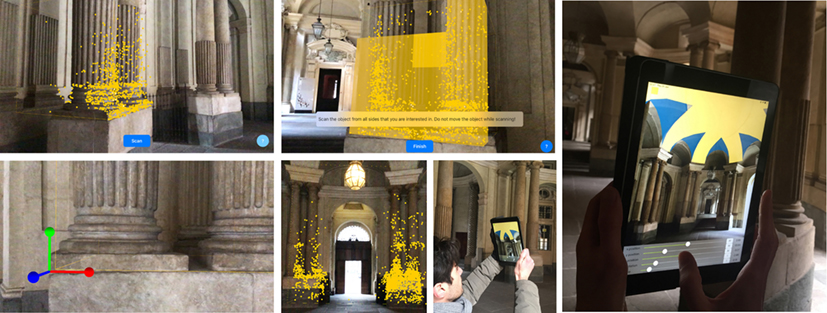
Artificial Intelligence and Augmented Reality: A Possible Continuum for the Enhancement of Built Heritage
Abstract
Augmented reality and artificial intelligence technologies are increasingly involved in the interpretation, classification, and eventually in our understanding of the built environment. This paper collects three recent on-site research experiences, which developed mobile app prototypes and experimented with these advancements in the relationship between computer vision and architectural artifacts. The first project concerns the vaulted atria of Baroque Turin and integrates a work of analysis and representation with augmented reality applications to visualize interpretative 3D models. The second project focuses on the development of a mobile app to access data on monuments, exploiting deep learning technologies for image recognition. The application field is the Imperial Fora in Rome. The third project is part of the so-called "third mission" of universities, being developed in partnership with a company operating in the electronic telecommunications infrastructure sector. The project explores automatic methods for updating existing building information modeling databases on antenna tower sites. This experience, the last in chronological order, though focused on a modern architectural asset, is meant to reframe and integrate the previous ones, updating the methods and the foreseen developments, and stressing the potential of the combined use of the studied technologies. The joint consideration of the three projects is aimed at reflecting on the processes, which from different techniques for the recognition of spatial features, produce schematic understanding and operational uses of the shape of built heritage.
DOI: https://doi.org/10.20365/disegnarecon.26.2021.16
Keywords
Full Text:
PDFRefbacks
- There are currently no refbacks.
Copyright (c) 2021 Roberta Spallone, Valerio Palma
DISEGNARECON
ISSN 1828 5961
Registration at L'Aquila Law Court no 3/15 on 29th June, 2015.
Indexed in SCOPUS. Diamond Open Access. All papers are subjected to double blind peer review process by qualified reviewers.
Journal founded by Roberto Mingucci
